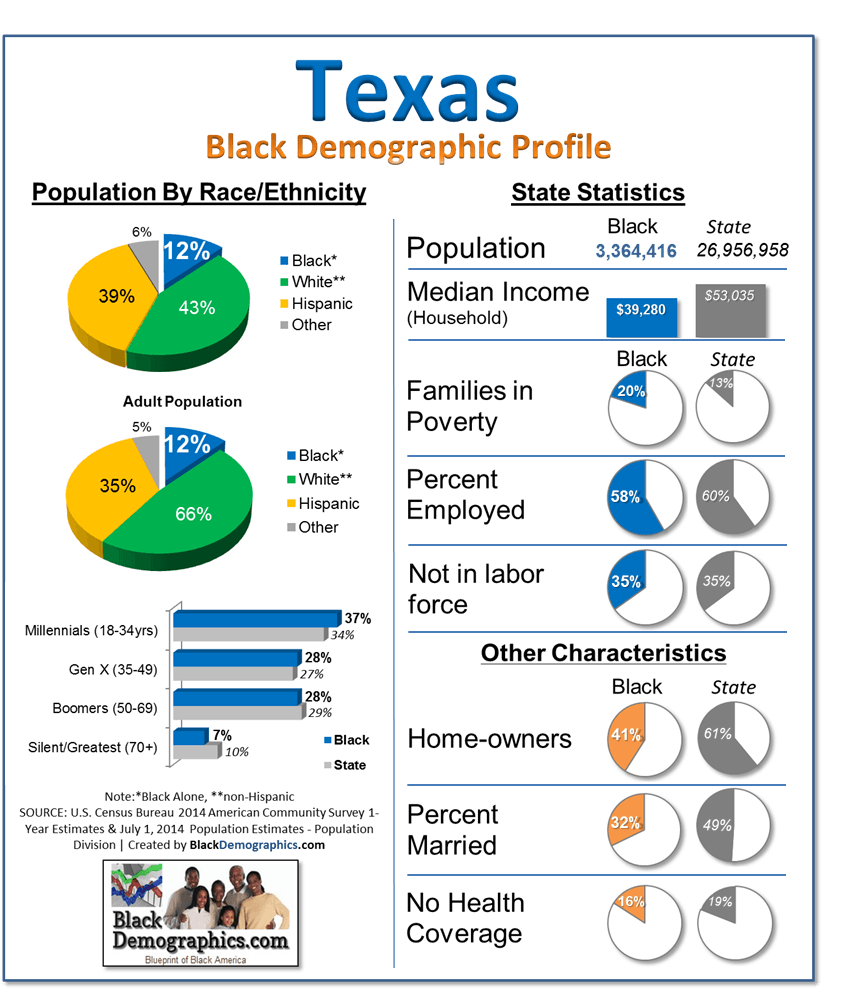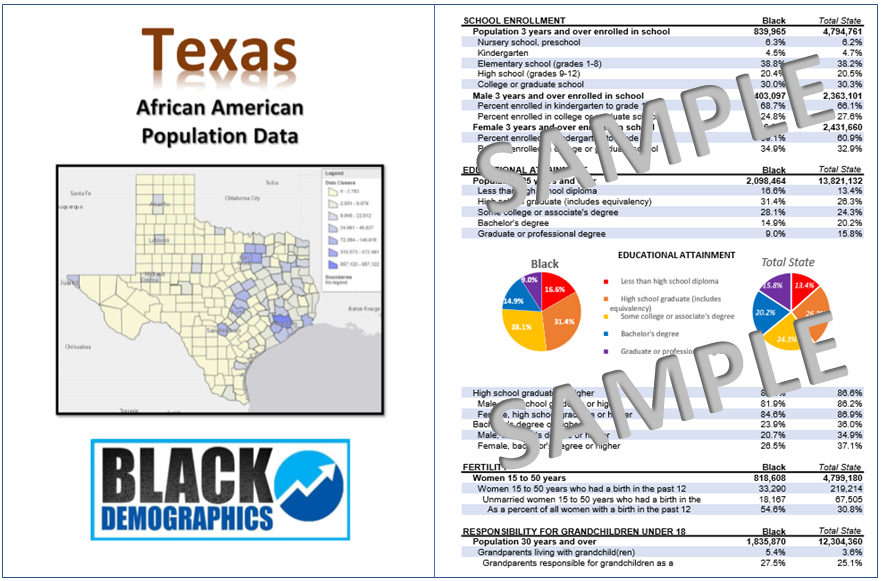Texas
| State Data | Black Alone | Total State |
| Population (ACS estimate) | 3,525,415 | 29,527,941 |
| Median household income | $49,767 | 66963 |
| Bachelor’s degree or higher | 28.7% | 33.1% |
| Family poverty rate | 16.5% | 11.0% |
| Percentage households Married-couple families | 30.4% | 49.5% |
| Homeowner rate | 41.3% | 62.6% |
Source: U.S. Census Bureau, 2021 American Community Survey 1-Year Estimates
Texas maintains a significant Black/African American alone population, making it one of the the state with the largest Black population in The United States. According to 2020 census data, the Black/African American alone population in Texas was around 3,954,752, which accounts for approximately 13.7% of the state’s total population.
Florida comes in at a close second and New York now in third. A large majority of the Texas African American population (about 65%) lives in the Houston and Dallas-Fort Worth metropolitan areas. Austin, San Antonio, and Beaumont have smaller but still significant Black populations. Most of the remainder of Black Texans live in the smaller cities, towns, and rural areas of East and Southeast Texas. There are also small Black populations in the cities and towns of West Texas and the Texas Panhandle such as Amarillo, Odessa, and El Paso. During the 1990s and 2000s Texas has been one of the top states for African Americans to relocate and most of that growth has been in Dallas and Houston.
The majority of recent Black migrants to Texas between 1990 and 2020 have come from other states within the United States, particularly from California, Louisiana, and Illinois. Some have also come from other southern states such as Mississippi, Alabama, and Georgia. Additionally, there has been a significant increase in Black immigrants from African countries such as Nigeria and Ethiopia. These recent Black migrants have contributed to the growth of Texas’ Black population and have brought with them diverse cultural traditions and experiences.
History
Though small at first there has been a Black presence in Texas since the late 1700s when they accompanied Spanish pioneers. The number of African Americans increased when Texas won its independence from Mexico and later joined the United States as a slave state. Between 1840 and 1860 the Black slave population grew from 11,000 to about 182,000 encompassing approximately 30% of the states population and lived mainly in the fertile rural areas of East and Southeast Texas.
The Black population continued to grow after emancipation as many Blacks from other former slave states established “Freedom Towns” throughout the state. Freedom Towns were all Black towns with their own economies much like the other towns of the old west popularized by Hollywood western movies and stories. The majority of these Black towns were eventually annexed and/or dissolved by growing White populations. A few remnants of these towns still exist such as Independence Heights in Houston and Bear Creek in Irving. Between 1900 and 1940 the Black population of Texas grew from 600,000 to 900,000.
During the period of slavery, many worked on cotton plantations throughout the state. In the 20th century, Black people worked in industries such as manufacturing, oil and gas, and transportation. During the Civil Rights era, Black residents of Texas worked in industries such as education, healthcare, and social services. Today, Black Texans work in a wide range of industries, including technology, finance, healthcare, education, and entertainment.
As the entire Texas population continued to grow White and Hispanic growth began to outpace that of African Americans and although the Black population grew to more than 2 million in 1990 it was only 12% of the states population. Today the Hispanic population continues to outpace Blacks and Whites in growth.




